Forex markets continued recent trends overnight with DXY strong but AUD hanging on. EUR is at the cliff’s edge:
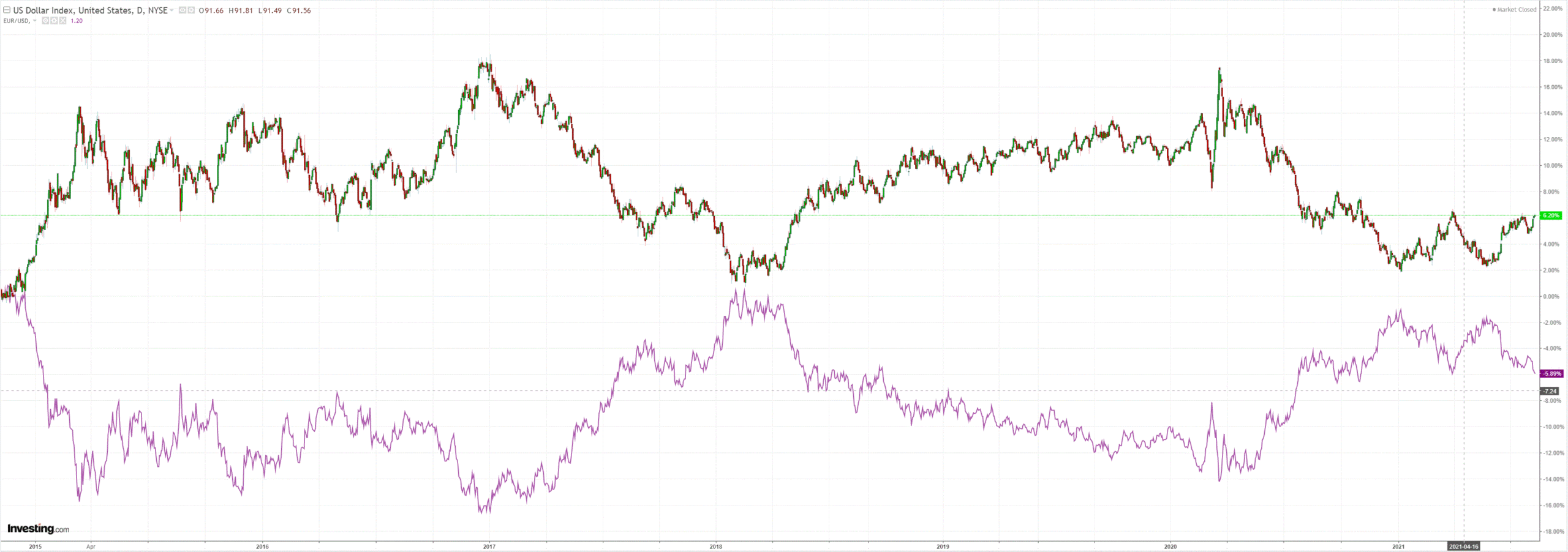
The Australian dollar pushed back from the brink and it looks like it’s basing against the weaker crosses:
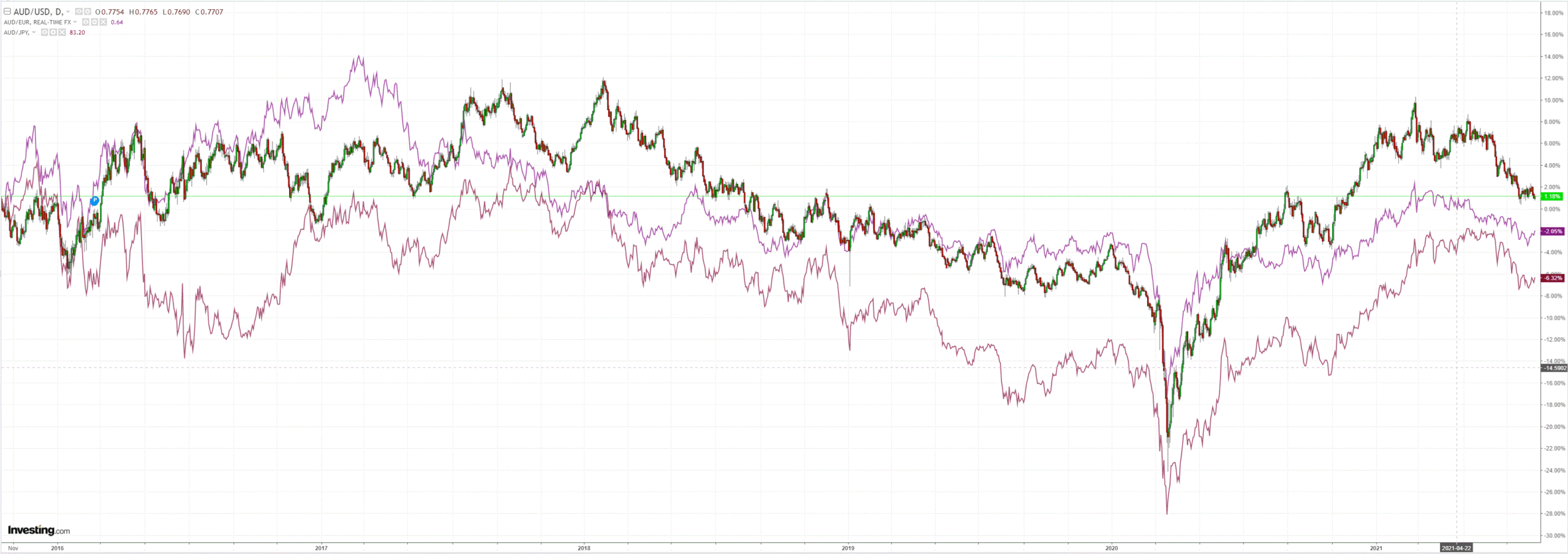
Commodities rallied on the US infrastructure package:
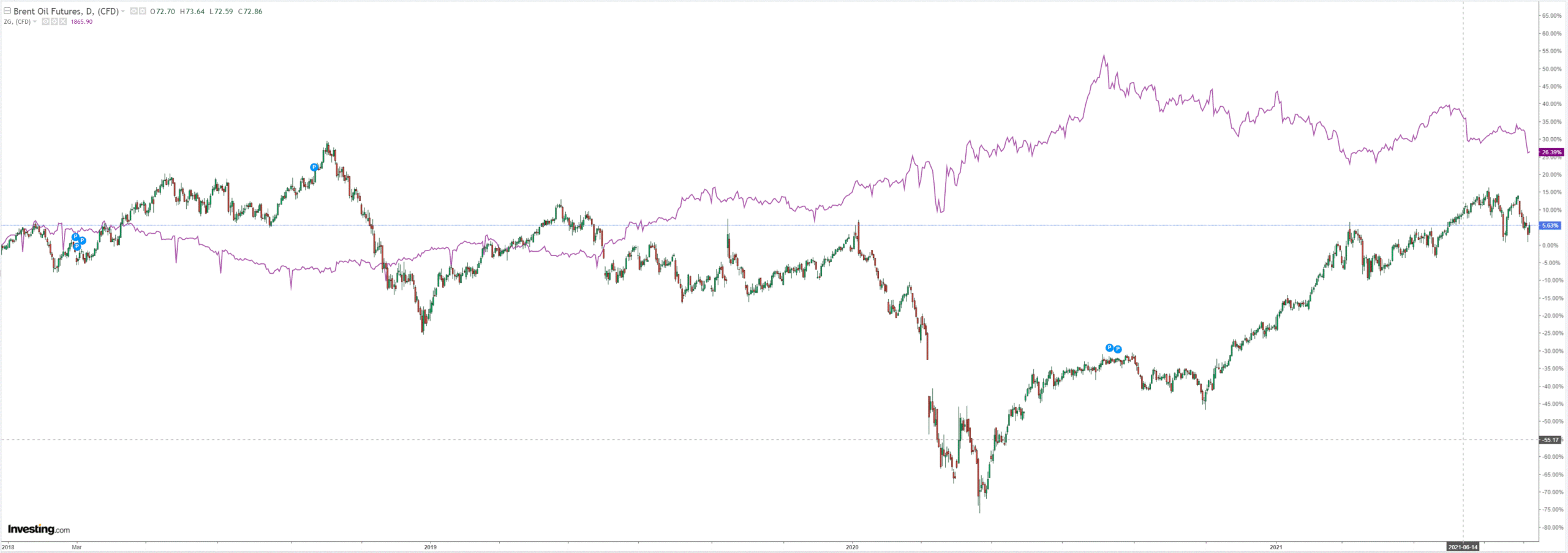
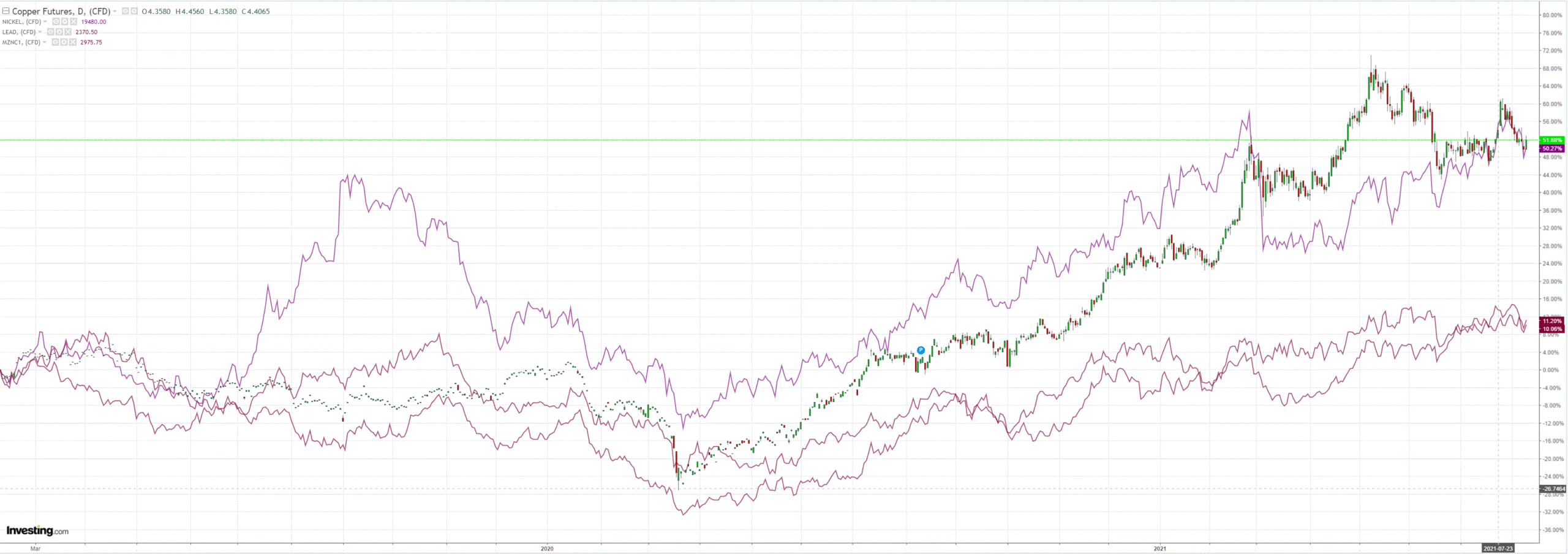
As did miners:
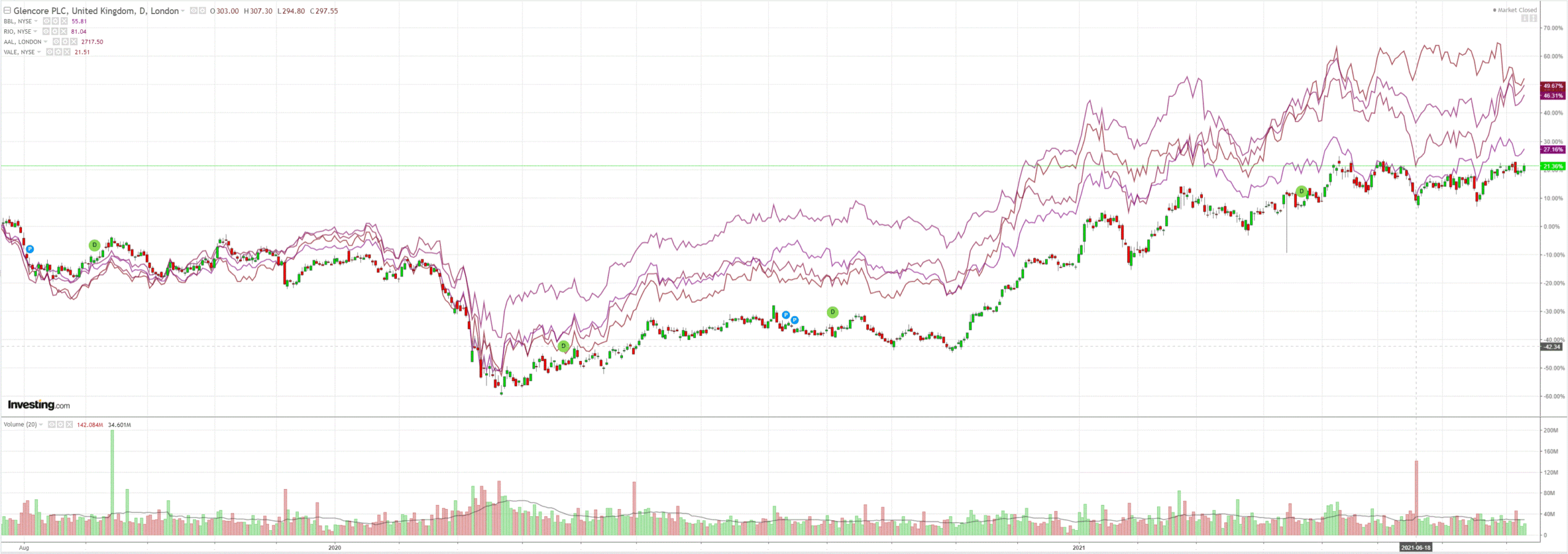
But not EM stocks:
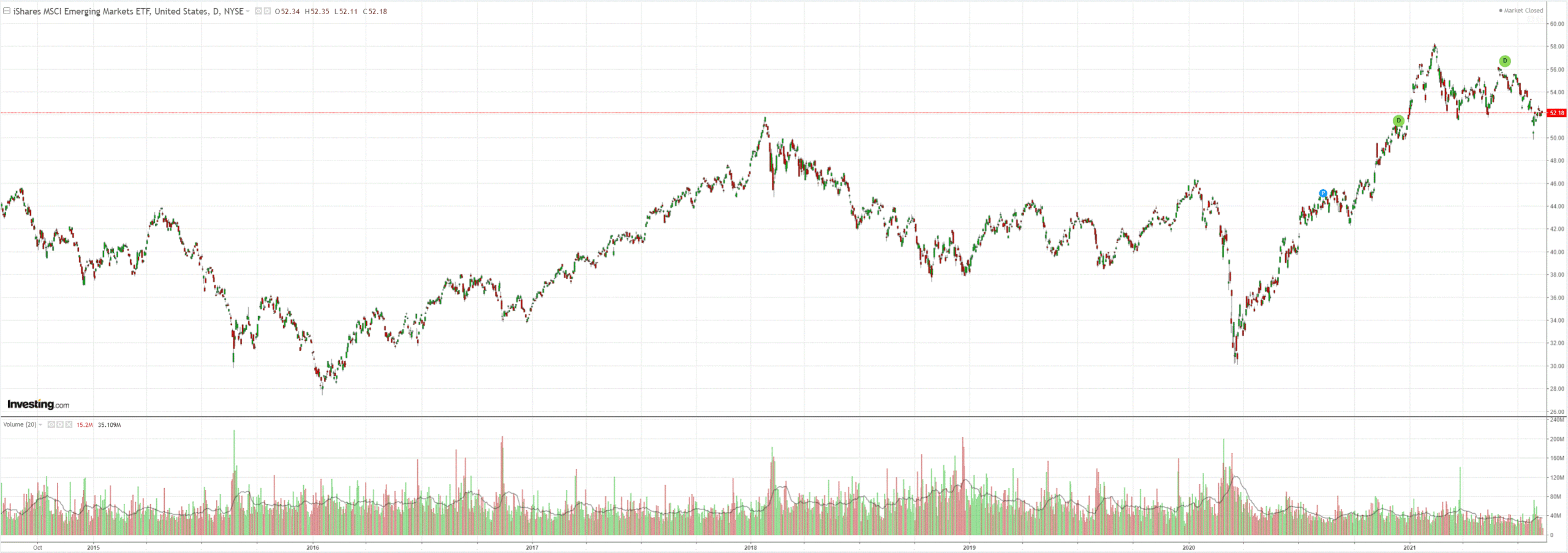
Nor junk:
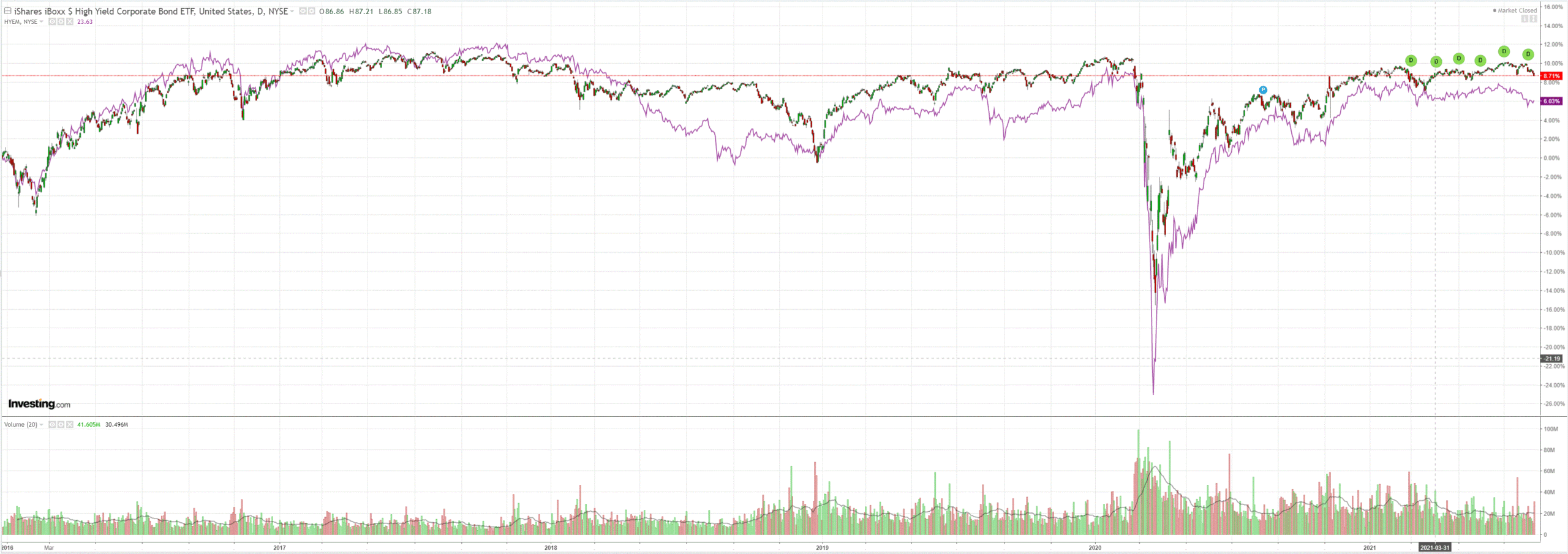
As yields jackknifed again:
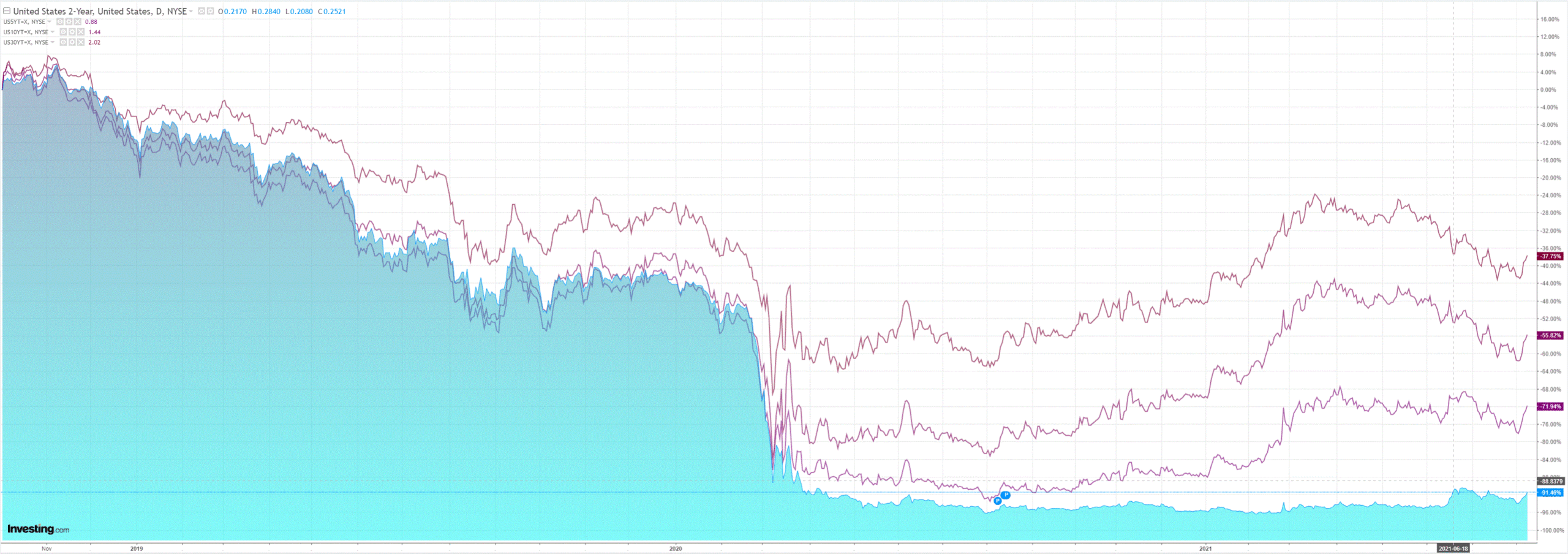
Which aided value over growth:
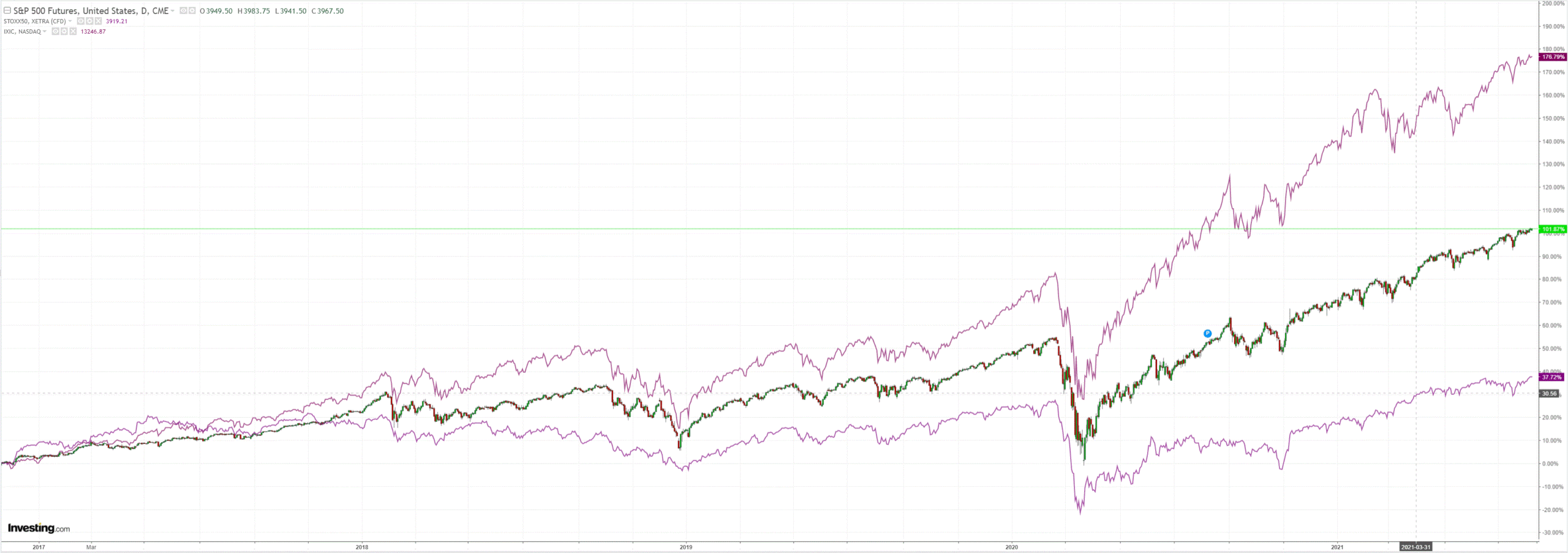
Westpac has the wrap:
Event Wrap
US non-farm productivity rose 2.3% in Q2 (vs 3.2% expected, 4.3% prior). The data shows a continuing productivity acceleration with the economic rebound, as a sustained exit of low-wage workers from the labour pool, and heightened hours-worked by the remainder, has lifted productivity. Labour costs rose 1.0% in Q2 (vs 1.0% expected, -2.8% prior (revised from +1.7%)).
The US small business sentiment survey (NFIB) for July saw the headline optimism reading fall from 102.5 to 99.7 (vs 102.0 expected). Components were mostly lower. The report noted small business owners are “losing confidence in the strength of the economy and expect a slowdown in job creation.”
The German economic sentiment survey (ZEW) for August saw the current conditions reading fall from 63.3 to 40.4 (vs 55.0 expected) – the lowest since November 2020. The current situation, though, rose from 21.9 to 29.3. The report warned of “increasing risks” to the economy, with investors \worried that a new wave of virus restrictions will limit further expansion.
Event Outlook
Australia: The August update of the Westpac–MI Consumer Sentiment Index will likely reflect the COVID situation weighing more heavily onsentiment. In NSW, lock–down measures remain firmly in place and have had a mixed impact on cases – slowing but not stopping the virus spread – with the policy focus now on accelerating vaccinations. Meanwhile, Vic and Qld both imposed new snap lock–downs during the survey week. For sentiment, the concern is two–fold: 1) that sentiment in NSW is still coming from a relatively firm level and so has scope for more substantive declines; and 2) that spill–overs to other states have been minimal. Both highlight downside risks to the August update.
US: The ‘reopening’ categories are expected to underpin another sizeable monthly lift in the July CPI (market f/c: 0.5%). The deficit is set to remain wide in July’s monthly budget statement on stimulus outflows (market f/c: -$266.5b). Finally, the FOMC’s Bostic and George, and NY Fed’s Logan will speak.
The big event of the night was the passage of the Biden infrastructure bill. WSJ.
The bipartisan infrastructure bill is unlikely to have a big impact on growth in the next few years, economists say. Longer term, though, investments in highways, ports and broadband could make the economy more efficient and productive.
The short-term boost to growth will be relatively limited for two reasons, economists say. For one, the bill represents just $550 billion in new spending—compared with nearly $6 trillion that Congress has approved in the past year-and-a-half to battle the Covid-19 pandemic and its economic fallout.
Second, the infrastructure spending will take place over five to 10 years starting in 2022, a longer timeline than pandemic-era initiatives like stimulus checks, extra unemployment benefits and small-business support programs. That will make its direct effects on employment and demand less noticeable.
Alec Phillips, chief political economist for Goldman Sachs Research, said the infrastructure bill could add around 0.2 percentage point to gross domestic product growth next year, and 0.3 percentage point in 2023.
This is only the preliminary to the major $3.5tr to be passed via Budget Reconciliation. Regardless, the market has the wrong end of the stick on this for commodities. It adds a little demand per annum (10mt of steel, 200k copper etc) but these numbers are swamped by falling Chinese demand. For instance, over the past six weeks alone, China has cut the peak-to-trough equivalent of…wait for it… 100mt of steel output annualised.
So, I am unfazed. I see the Biden infrastructure packages as largely commodities bearish given they add so little in hard building while adding so much to human development.
Once complete, the full package will add 0.5-1% to GDP for the next six years giving the US an unassailable growth, inflation and yield advantage driving a DXY bull market.
As China slows, that’s a commodities and Australian dollar nightmare scenario.

